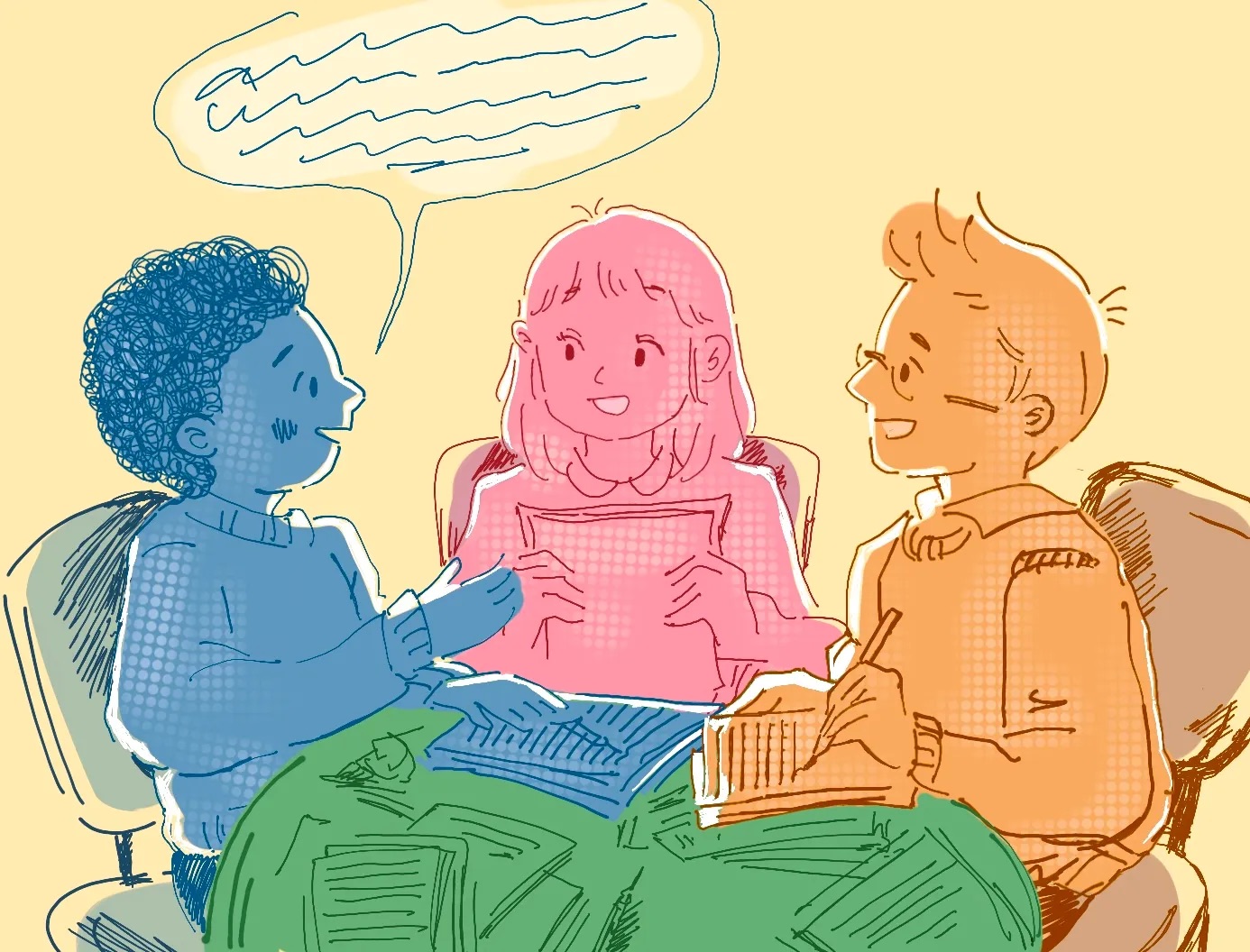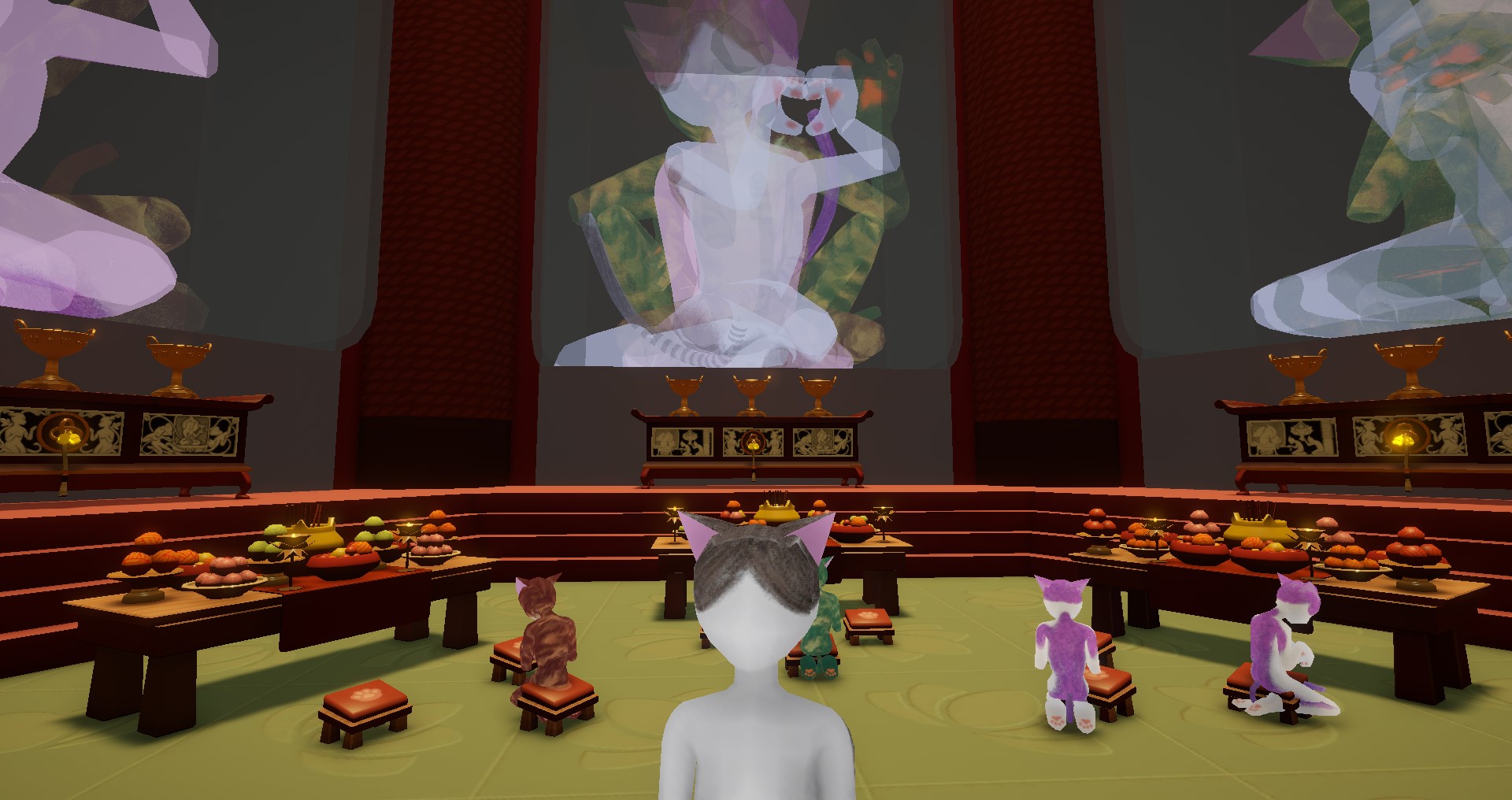From A to Zine: Printed Matter Society explores creative mediums, DIY art

Pictured are three students who are in the Printed Matter Society club at UCLA working on crafts. Printed Matter Society deals in collages and zines among various other craft mediums. (Courtesy of Printed Matter Society)
By Jessica Li
April 8, 2025 10:17 p.m.
At Printed Matter Society, paper holds memory.
The club deals in collages, bookbinding, printed photography and, most prominently, zines. These handmade, noncommercial issues are curated from original or appropriated images and text to encapsulate the artist’s vision in booklet form. Craft enthusiasts and DIY beginners alike may sit down at one of Printed Matter Society’s biweekly workshops to find materials ranging from vintage clippings to patterned patches within arm’s reach for creative expression.
“A zine issue is an encapsulation of where you are in life at a moment in time,” said founding member and first-year art student Lily Wuertz.
[Related: UCLA film series reflects on cultural impact of Giant Robot magazine 30 years on]
Wuertz said she enjoys compiling doodles from middle school homework, phrases from school policy handbooks, QR codes of atmospheric Spotify playlists and verses of poetry. Whether she writes political or personal content, Wuertz said she treats her works as diaries that establish a line of communication with her readers. She added that her inspiration ranges from feminist movements to punk music to other styles of art that eventually winds up on the tangible page.
“I would describe (it) as a tactile experience,” said fellow founding member and first-year art student Katelyn Tung. “The pictures that you have on your phone get overlooked. … You won’t really remember it because it’s online. Through making photo zines, it’s a whole other experience of seeing what someone else is seeing because it’s so personal.”
Facilitating connection through the physical medium has remained a goal since Printed Matter Society’s first meeting in October 2024, said first-year art student Armando Solares.
Solares, another founding member, said the idea for the club originated from the Enormous Activities Fair, in which he, Wuertz and Tung encountered a number of art collectives and publications that had a competitive application process. He said they also identified a gap in organizations specifically catering to zine creators. Afterward, Solares said the founders of Printed Matter Society entered their first quarter at UCLA with the objective of establishing a community-based club that would foster the physical media projects of its members.
“Our goal was to try to get people to stay creative as much as they could,” Tung said. “We want to promote people having creative time outside of class to be able to visually express what they’re thinking about.”
Wuertz said Printed Matter Society meetings are a valuable time and place for her and her friends to make art for two to three hours. Wuertz added that the art major blurs the line between work and leisure, and the club provides an opportunity to create outside an academic setting.
In addition, members are encouraged to exchange feedback, discuss ideas for future projects, initiate collaborative zines and eventually distribute their creations, Solares said. Solares added that, like zine culture flourished in the ‘70s to ‘90s with the DIY diffusion of information through art, poetry and other forms, Printed Matter Society is committed to openly showcasing the artwork of its members to a wider audience. With more funding and experience, the club is hopeful for a future of frequent zine trades, festivals, competitions and shows, Solares added.
In Printed Matter Society’s first exhibition March 6, the Broad Art Center’s Little Gallery saw all four walls plastered with art of diverse mediums and textures, divulging lived experiences and social commentary. The show, “Paper Trails,” was deliberately interactive – a center table invited attendees to flip over glazed stoneware tiles in one student’s project, and podiums displayed booklet or one-sheet zines for close examination or giveaways.
“It was rewarding to have people look at your art in a gallery because that doesn’t happen too often,” Wuertz said. “Usually, you show people your art on Instagram or in your sketchbook, but when it’s on a wall, it’s a different type of feeling. You have some sort of authority or importance or validation.”
Tung added she wants “Paper Trails” to not only garner the attention of artists but also inspire a wider demographic of viewers who may be interested in venturing into the realm of zine-making, Tung said.
“Because most of the things in the show are printed photos and genuine DIY, hopefully (they) can see it’s not something too far-fetched and that they could also make something very similar – at the same level of quality – even though they aren’t art majors,” Tung said.
[Related: Cicadas Chinese Calligraphy Club makes its mark through shared cultural heritage]
At their core, zines are steeped in the intrinsic pleasure of creation that may intersect with fan spaces or fandom, Wuertz said. Tung added that her zines center around music subculture and bands that may not exist in the mainstream, and Solares said the club is open to any artwork celebrating an interest, as serious or unserious as it may be.
“Anyone who’s a fan of anything should make a zine about the thing that they’re into because other people in that fandom will be obsessed with it,” Wuertz said.




